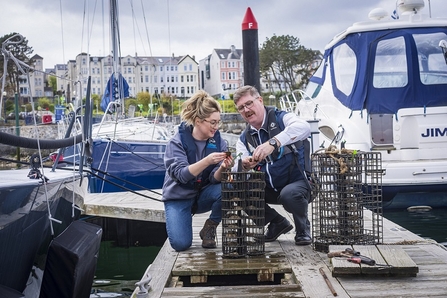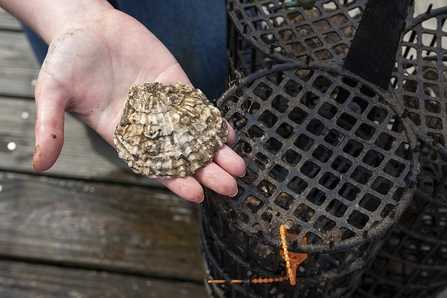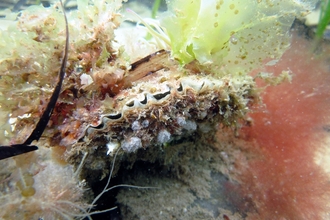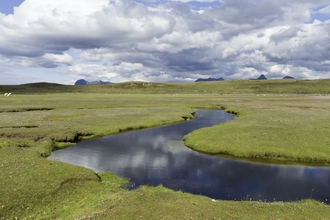Join us today and together we can BRING NATURE BACK
The ambitious restoration project, officially launched today by Ulster Wildlife to mark Endangered Species Day, sees approximately 700 mature oysters (Ostrea edulis) suspended in cages under the pontoons of Bangor Marina, creating the first native oyster nursery of its kind on the island of Ireland.
As sea temperatures warm over the coming months, the 24 nursery cages will generate millions of oyster larvae which will settle on the seabed, helping the native oyster population recover while also boosting biodiversity and improving water quality in Belfast Lough.




